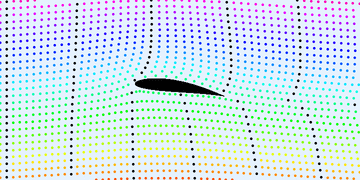It's an interesting question, but I think you're making some incorrect assumptions. The classical Venturi effect is the increase in velocity (and decrease in pressure) in an air stream moving through a constriction in a closed pipe. You can prove that the velocity increases in direct proportion to the change in cross-section of the pipe. You can also prove that the pressure decreases by noting that, for a particle to accelerate, it must have more force on one side than the other. Since force in a gas equals pressure, the pressure must decrease as the particles accelerate.
But this is only true for a closed system with constant energy in the flow. If you put a Venturi out in the open air as shown in your drawing, the back pressure from the constriction will reduce the amount of gas flowing into the pipe. So the gas flowing into the entrance of your Venturi will be slower than the free air stream. It's true that whatever gas does make it into the front aperture will subsequently speed up in proportion to the change in cross section. But the physics conspires such that you will never get a flow in the negative direction (with respect to the outside air) as you suggest--sorry.
I'm editing my answer based on your follow-up question, with the following image:

Note that the air on the top of the wing does indeed go faster than the air on the bottom. It also appears that the air about half a wing-cord above the wing is actually moving faster (to the right) than the free stream. So your premise is correct for an airfoil, which casts reasonable doubt on my Venturi answer. I still think the backpressure in a Venturi would prevent backwards flow, but there may be some configuration that gets just enough increase in velocity to allow it. I'm not sure it's the sort of thing you can prove mathematically. It will take an experiment, or a good finite element simulation program like the one that generated this image.

